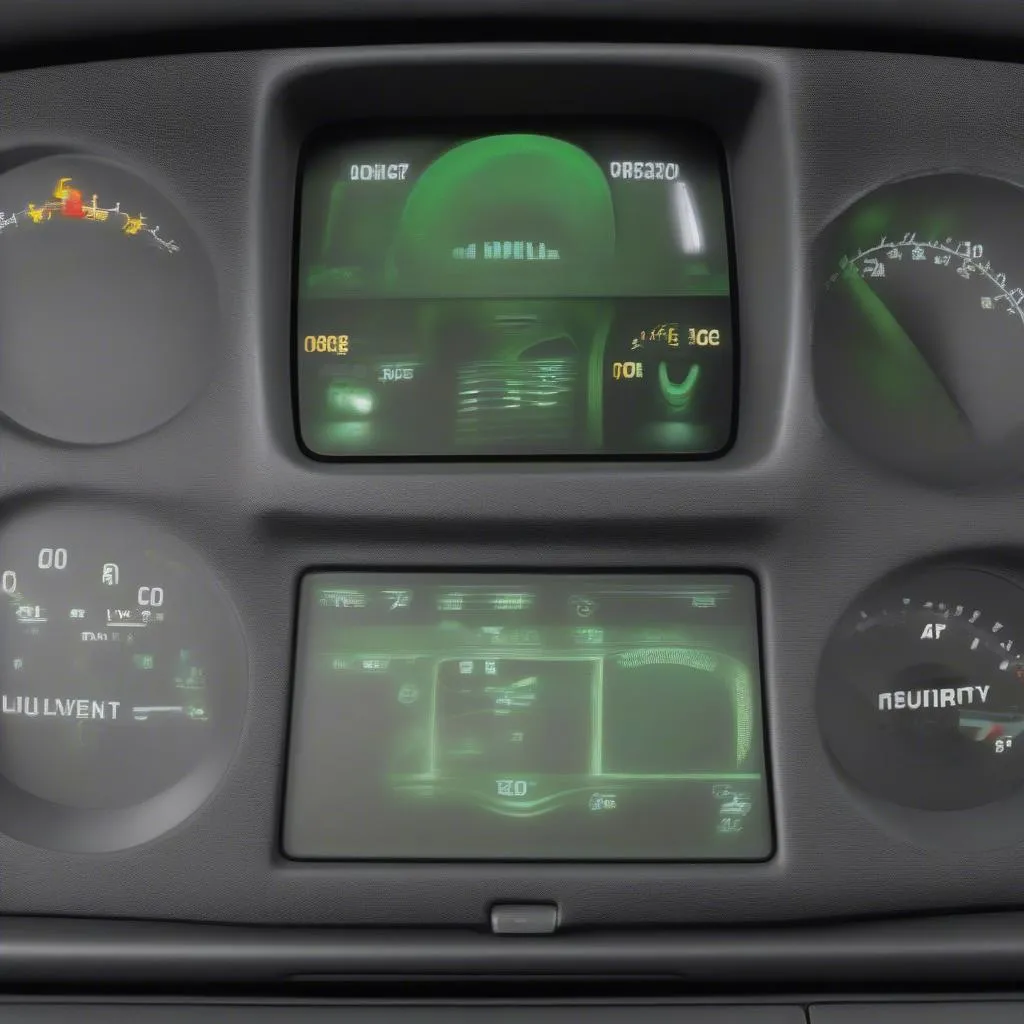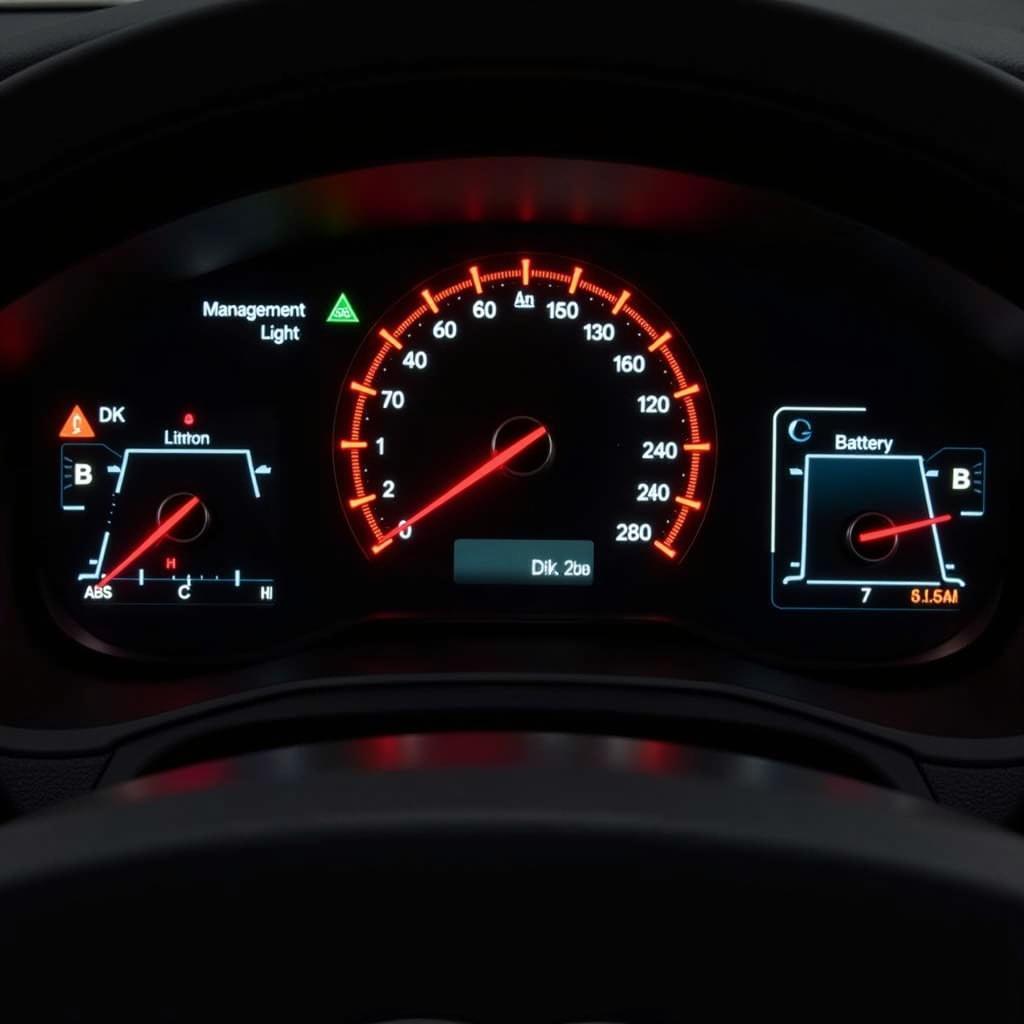The dreaded “Service Stabilitrak” and “Service Brake” warnings illuminating your 2014 Silverado’s dashboard can be a real headache. This guide provides in-depth information on diagnosing, troubleshooting, and potentially fixing the issue, covering everything from simple DIY checks to more complex scenarios requiring professional assistance.
Understanding the Stabilitrak and Brake Systems
The Stabilitrak system is crucial for maintaining vehicle stability, especially during challenging driving conditions. It works in conjunction with the Anti-lock Brake System (ABS) and Traction Control to prevent skidding and loss of control. When these systems detect a potential problem, the “Service Stabilitrak” and/or “Service Brake” warnings appear. Understanding the interconnectedness of these systems is key to resolving the issue.
Common Causes of the Warnings
Several factors can trigger these warnings in your 2014 Silverado. These range from simple issues like a low battery voltage or a faulty wheel speed sensor to more complex problems like a malfunctioning steering angle sensor or issues within the Electronic Brake Control Module (EBCM).
- Low Battery Voltage: A weak battery can disrupt the proper functioning of the electronic systems, including Stabilitrak and ABS.
- Faulty Wheel Speed Sensor: These sensors monitor the rotational speed of each wheel. If one is faulty, it can send incorrect signals, triggering the warning lights.
- Steering Angle Sensor Issues: This sensor informs the Stabilitrak system about the steering wheel’s position. A malfunction can lead to inaccurate readings and activate the warnings.
- Electronic Brake Control Module (EBCM) Problems: The EBCM is the central control unit for the Stabilitrak and ABS systems. Internal faults within the EBCM can lead to various issues, including the dreaded warning messages.
- Brake System Issues: Problems with the brake system itself, such as low brake fluid or worn brake pads, can also trigger these warnings.
Diagnosing the Problem
Diagnosing the root cause requires a systematic approach. Start by checking the basics:
- Check the Battery: Ensure the battery voltage is within the recommended range. A simple voltage test can confirm this.
- Inspect the Brakes: Check the brake fluid level and look for any signs of leaks or worn brake components.
- Scan for Trouble Codes: Use an OBD-II scanner to retrieve diagnostic trouble codes (DTCs). These codes provide valuable insights into the potential source of the problem.
Using an OBD-II Scanner
An OBD-II scanner is a crucial tool for diagnosing car problems. It retrieves DTCs that pinpoint specific areas to investigate. These codes are like a roadmap to the issue, helping you focus your troubleshooting efforts.
Fixing the Problem
Depending on the diagnosed issue, the fix might involve simple DIY solutions or require professional assistance.
- Low Battery Voltage: Replace or recharge the battery.
- Faulty Wheel Speed Sensor: Replace the faulty sensor. This typically involves removing the wheel and accessing the sensor behind the brake rotor.
- Steering Angle Sensor Issues: A faulty steering angle sensor often requires calibration or replacement. This is best handled by a qualified mechanic.
- EBCM Problems: Diagnosing and repairing EBCM issues can be complex. Professional diagnosis and potentially replacement of the module may be necessary.
- Brake System Issues: Address any brake system problems such as low brake fluid, leaks, or worn components.
“Regular maintenance and addressing warning lights promptly can prevent more significant problems down the line,” advises John Davis, a senior automotive electrical engineer specializing in diagnostic services.
Remote Programming and Software Updates
In some cases, the “Service Stabilitrak” and “Service Brake” warnings may be due to software glitches within the vehicle’s control modules. Remote programming and software updates, performed by a qualified technician, can resolve these issues. This involves connecting specialized diagnostic equipment to the vehicle and updating the software to the latest version.
Conclusion
Addressing the “2014 Silverado Service Stabilitrak Service Brake” warning effectively involves systematic diagnosis and targeted solutions. While some issues can be resolved with DIY fixes, others require the expertise of a qualified technician. Ignoring these warnings can lead to more serious problems down the road, so addressing them promptly is essential. By understanding the intricacies of these systems and following the guidance in this article, you can keep your 2014 Silverado running smoothly and safely.
“Proactive maintenance is always the best approach. Regular checks and timely repairs can prevent these warnings from occurring in the first place,” adds Maria Sanchez, a leading automotive diagnostic specialist.


